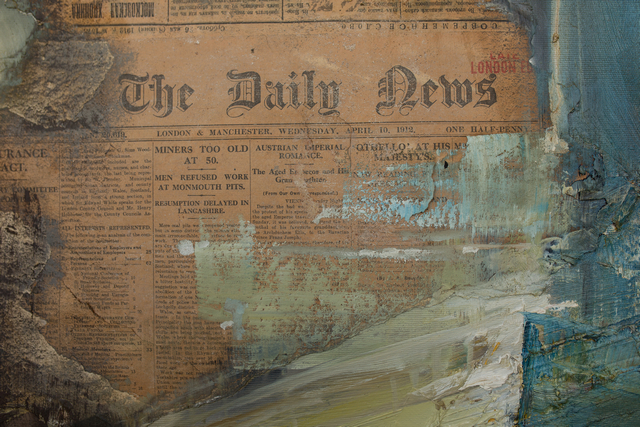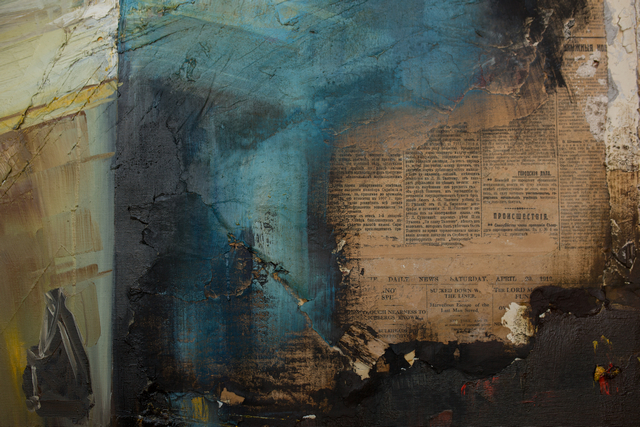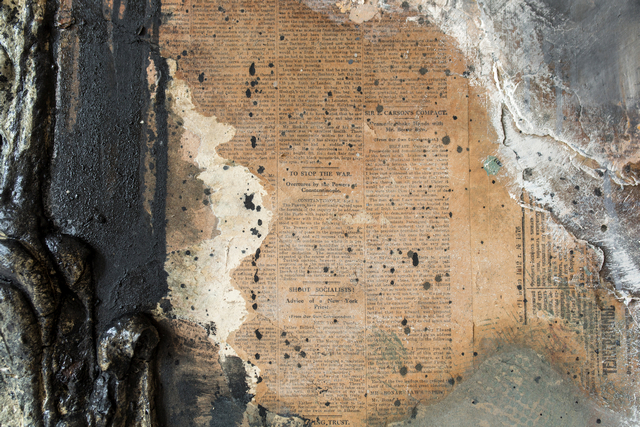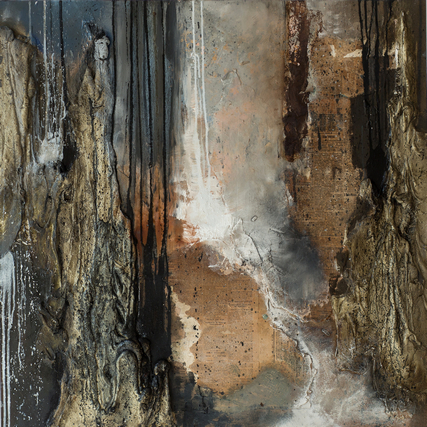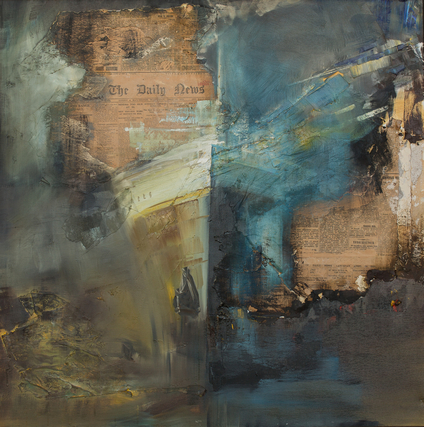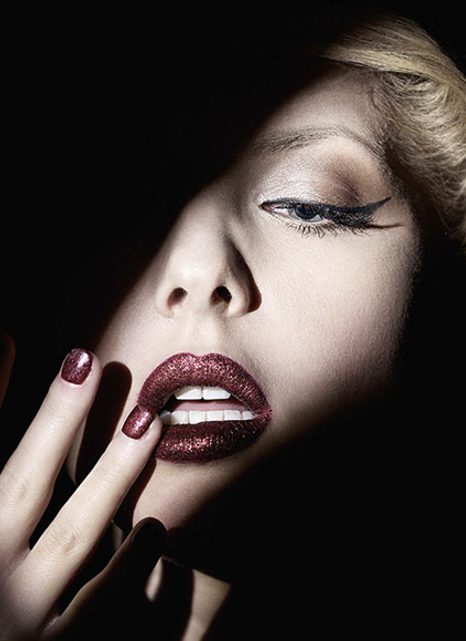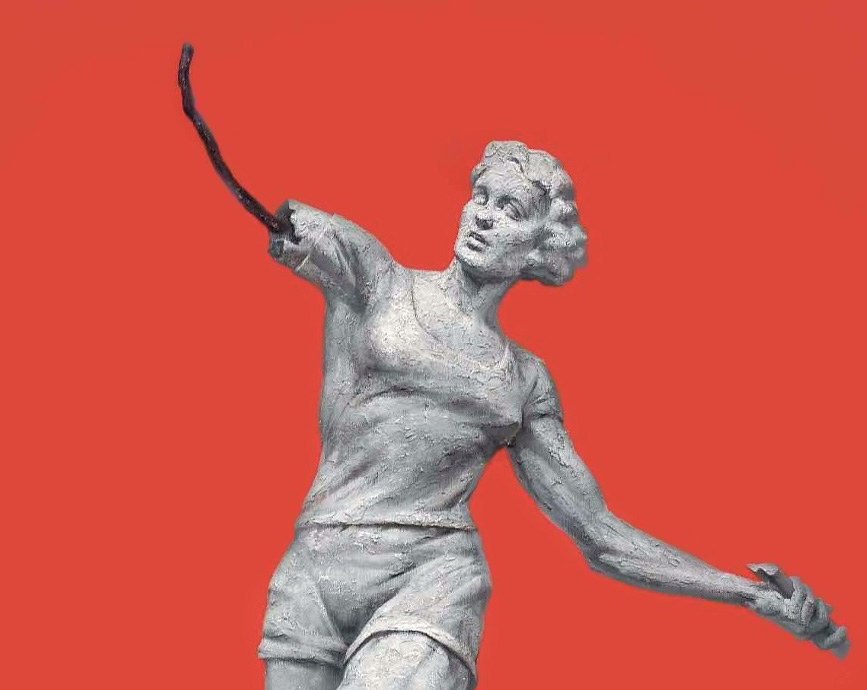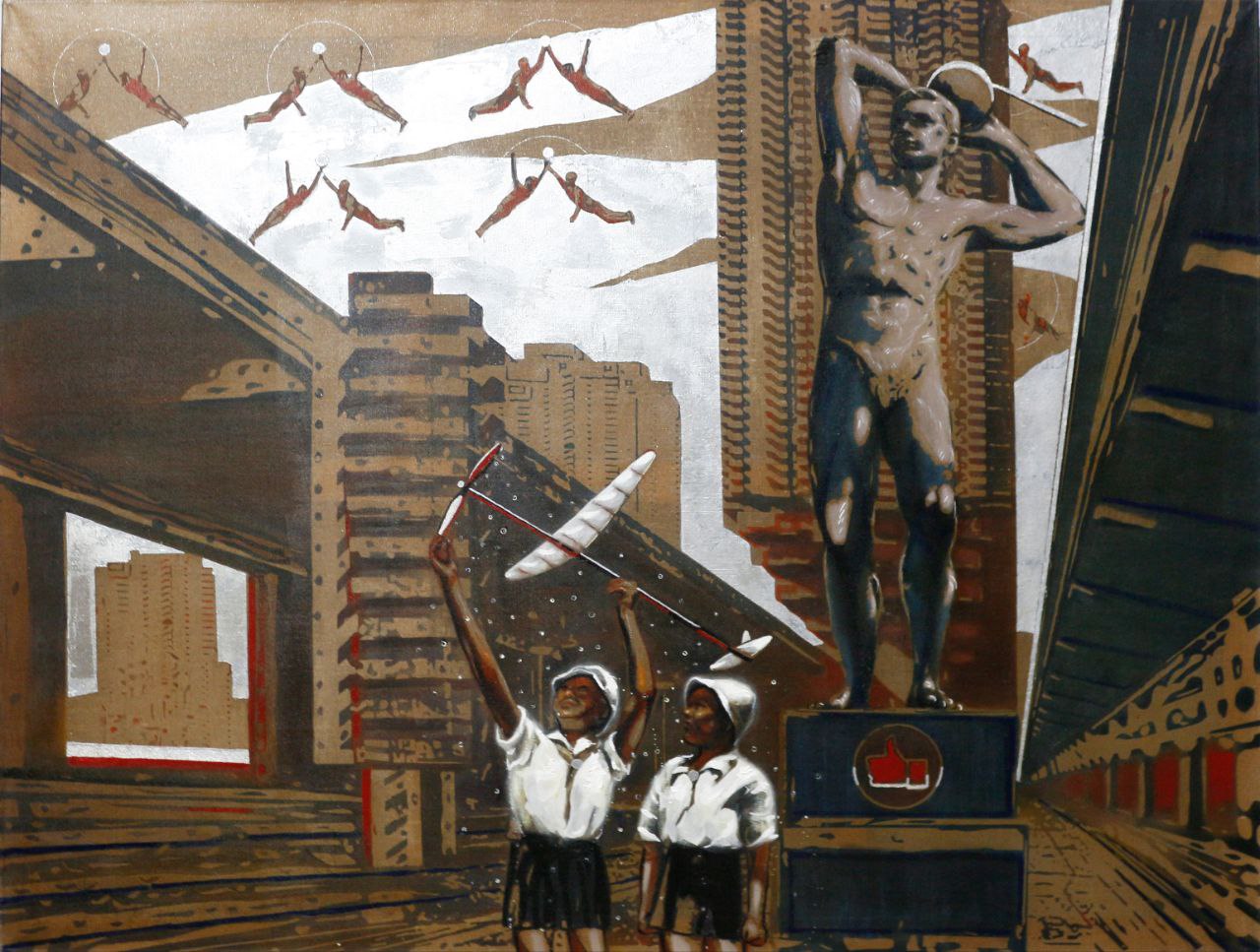Erarta Museum is proud to present the exhibition “Under the Wallpaper” by Grigory Lysak. It reveals an intricate combination of different painting styles, everyday life and information noise of the 20th century.
- The paintings you can read
- Art in search of lost time
- Monumental works that have overheard "the noise of the century"
Paradoxically, “Under the Wallpaper” art series manages to combine professionalism, aggressive textures and the finest elegiac emotions. Every work unleashes a ghost from the past, created through artistic means alone, but supported by convincing archaeological evidence.
Grigory Lysak, while staying true to the spirit of the times, attempts to solve the major conflict in romanticism: the incompatibility of creative work and everyday existence of a professional. Today the urban life is full of unprecedented enthusiasm, and it makes you believe in the transforming power of beauty.
Where just three decades ago some production was in full swing, today opens a new “creative space”, developing a spirit of a young modern professional who sees his work as a creative act. “Under the Wallpaper” series, born from cultural gentrification, bids farewell to the past.
The paintings resemble abstract expressionism, a long-established cultural phenomenon that to this day remains relevant. The style suggests frenzy and elemental force, but what we find instead are the hints of the sky, the horizon and a coast. The incipient chaos is counterbalanced by the composition. These truly excessive heavily textured artworks aim at immediate emotional reaction. They are made, however, with a cerebral approach of a highly-skilled author. The artist found his subject during the architectural and restoration training when he was working with the stucco decorations of dilapidated mansions and houses. And it was there, at the construction site, that Grigory Lysak succumbed to the vice of urban melancholy and the aestheticization of boredom, the affliction of many successful artists.
Imagine a synthetic silk wallpaper sheet heavily hanging down from the wall, under which you can see the pink patches of Delovoy Petersburg Newspaper dating back to the mid-90s, and then, yellow newspaper from Perestroika era; next come the dark-blue thick pre-Revolutionary wallpaper and illegible faded German and French texts, plaster coat, and finally, brick. The fragment of the wall as a curious art object in itself has inspired Grigory Lysak to recreate its story using the language of the expressive painting. The artist tries to capture the rarest emotions akin to elegiac experience of time through the means usually reserved for strong overpowering feelings. The painting in this case becomes an archaeological section rather than a window into another world. Perhaps it could be considered a mural that celebrates the life of walls where the “depth” is no longer a metaphor. Multilayer texture of Grigory Lysak’s paintings is an information environment where the signs, encoding almost two centuries of the city’s history, dissolve. These paintings make something accidental, irrational and extremely emotional coexist with the structural and carefully calculated.
You can quite literally read the “Under the Wallpaper” series for the impulse to create a certain artwork has come from one or another early XX century newspaper headline that broke through the thick layer of everyday life, or in modern terms, from a “newsmaker”, something which was acutely felt by townspeople 80, 90, 100 or more years ago. Thus, a dramatic piece of visual art is turned into an object of media archaeology, a special field that studies preservation, broadcasting and production of texts. Modern thought sees art history as a nonlinear process, not necessarily leading to the pinnacle of human genius. These works stir up aching curiosity, make you want to learn something about people of the past, who were horrified by the Titanic disaster, survived the winters of Blockade, celebrated the resettlement of their communal apartment and lived to see the major repairs.

